Looking for cool things to do in Copenhagen, Denmark? Check out this list of the most popular sights and things to do in Copenhagen from a local.
So, Denmark is my home country and I’ve lived here all my life. I don’t exactly live in Copenhagen, but I’ve been there multiple times. Some say that Copenhagen is the happiest city in the world, but why?
Copenhagen is a beautiful and cultural capital with something for everyone. It’s without a doubt a vibrant city with amusement parks, world-class restaurants, and major sights in Copenhagen.
So, if you are planning a trip to Copenhagen, I would like to recommend the very best things to do in Copenhagen from a local Dane.
Table of Contents
The best things to do in Copenhagen:
1. Tivoli Gardens
Tivoli Gardens is centrally located in Copenhagen and is a famous amusement park, founded in 1843. The old age contributes to it being the world’s second-oldest amusement park, surpassed only by Dyrehavsbakken in Copenhagen.
The garden was once popular with H.C. Andersen, Walt Disney, and other great celebrities who all loved the garden. I especially recommend visiting Tivoli in December. At this time of year, there’s a magical atmosphere with Christmas lights, Christmas entertainment, and Christmas markets.
Tivoli has a wide selection of rides for children as well as adults. But there are also many great restaurants, theater performances, and regular concerts. The atmosphere in Tivoli is absolutely amazing and is one of the reasons why it’s one of the best things to do in Copenhagen. Here you’ll find beautiful architecture, historic buildings, and lush gardens with thousands of flowers.
Tivoli’s oldest amusement is the wooden slide from 1914 which is one of the world’s oldest of its kind. In fact, it’s one of only seven roller coasters in the world to have a helmsman on board to steer the brakes manually.
The entrance fee to Tivoli is DKK 130-140 for people aged 8 and up. Admission for children from 3-7 years is DKK 60 and free for children under the age of 3. Read more on Tivoli’s official website.
Related post: 20 Free Things to Do in Copenhagen
2. Nyhavn
Nyhavn is one of the most popular tourist attractions in Copenhagen and is of course an absolute must-see. This iconic and colorful harbor district is buzzing with life and happy days. It is especially in the summer that Nyhavn flourishes and invites to pleasant walks and cold beers on the harbor quay.
The old colorful houses at Nyhavn were built in the 18th century and are used for housing today. However, there are also restaurants, cafes, and bars in most of the houses.
Denmark’s very own fairy tale writer H.C. Andersen has actually lived in Nyhavn on several occasions. He managed to live in four of the houses. In fact, this is where he wrote his very first fairy tales. If you pay extra attention to No. 67, you can see a small memorial plaque in honor of the world-famous poet and fairy tale writer.
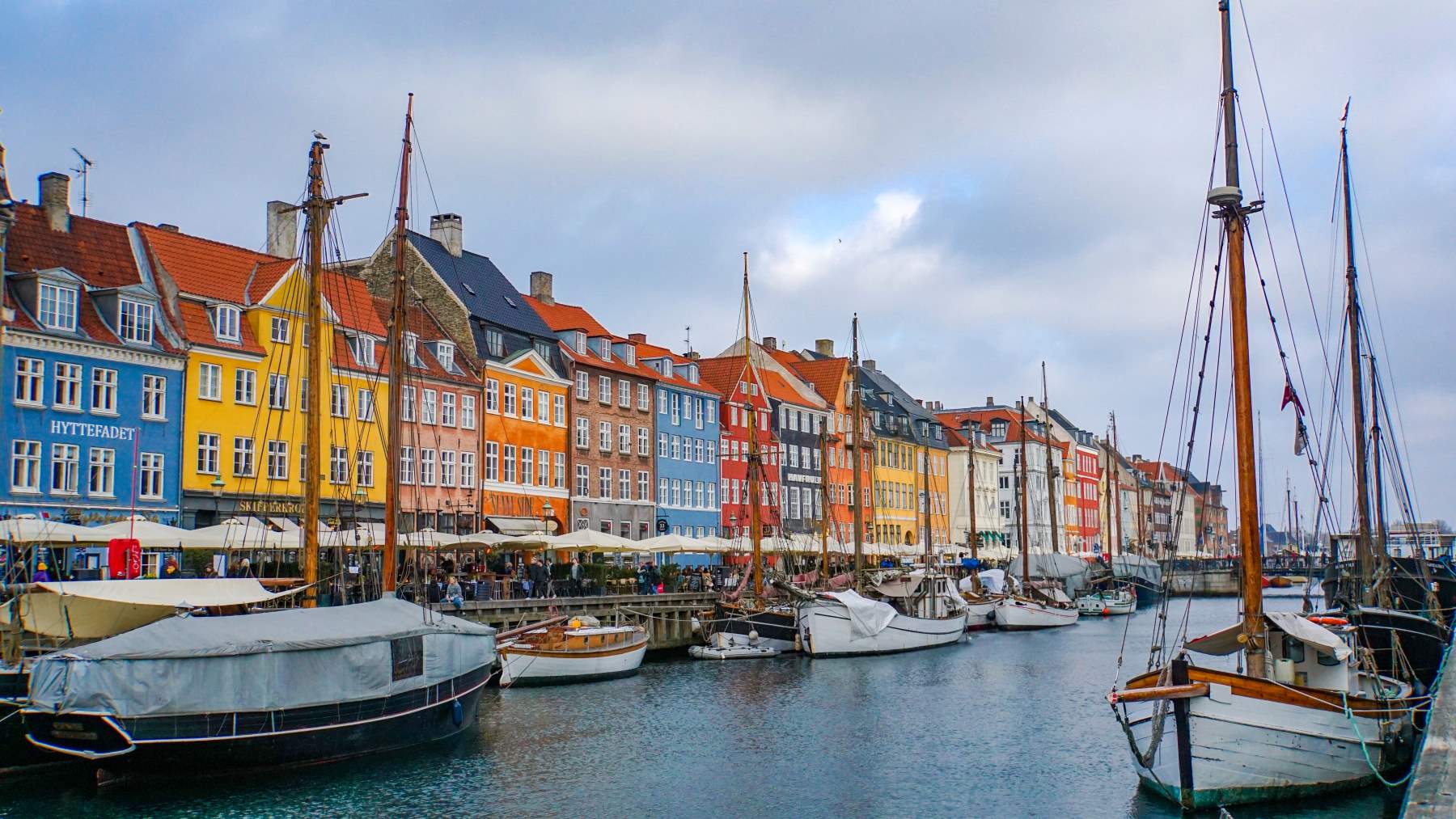
3. Botanical Garden (Botanisk Have)
The Botanical Garden in Copenhagen is a living museum with Denmark’s largest collection of living plants. It’s a wonderful oasis in the middle of the capital that you shouldn’t miss. The garden’s most important task is to preserve several rare plant species for research, dissemination, and teaching.
If you’ve had enough of the cold winter weather in Denmark, you can visit Palm House. This is one of four large greenhouses in the garden. Inside the Palm House, there’s a lovely tropical climate. When you close your eyes, it almost feels like you’re in a tropical setting.
The botanical garden is a free thing to do in Copenhagen, but it isn’t free to visit the Palm House. Admission to the Palm House is DKK 60 for adults and DKK 40 for students. Admission for children from 3-17 years is DKK 40 and free for children under 3 years. Read more about the Botanical Garden.
4. Havnebadet Islands Brygge
It is a must to visit Havnebadet on Islands Brygge on a hot summer day. The atmosphere is nice with the smell of barbecue, the view of sunbathers, and the taste of cold canned beer. The harbor bath consists of five pools, two of which are intended for children.
At Havnebadet you’ll be able to find a spring tower from which you can jump from several different heights directly into the harbor. There’s also ample opportunity to throw the beach rug on the lawn next door. Why not trying to get a little color on your skin in the Danish summer sun?
If you’re visiting Havnebadet in the winter, there are often winter bathers who jump into the icy and frozen water. Brrr. You can jump into the water yourself but be aware that it requires membership. It is free to visit Havnebadet, so there are no obstacles to being cooled down a bit.
5. Amalienborg Palace (Amalienborg Slot)
Amalienborg Palace is the residence of the royal family in Denmark. The palace consists of four almost identical mansions that frame Amalienborg Palace’s square. The palace was built in the 18th century and was originally built to house four noble families. The royal family originally lived at Christiansborg Palace but after a fire in 1794, Amalienborg Palace was acquired as a royal residence.
Queen Margrethe II of Denmark lives in Christian IX’s mansion. If the flag is raised, it reportedly means she’s home. The Crown Prince’s family lives in Frederik VIII’s mansion while the last two mansions are used for guest houses. You can also visit the Amalienborg Museum where you can learn about the history of the royal family over the last 150 years. However, the museum isn’t free to visit.
One of the great things to do at Amalienborg is to watch the Changing of The Royal Guard in the Palace Square. The guards march daily from their barracks at Rosenborg Castle through the streets of Copenhagen before ending at Amalienborg at 12.00 PM. Changing of The Royal Guard takes about 30 minutes, but of course, it’s allowed to walk from there before. Read more about Amalienborg.
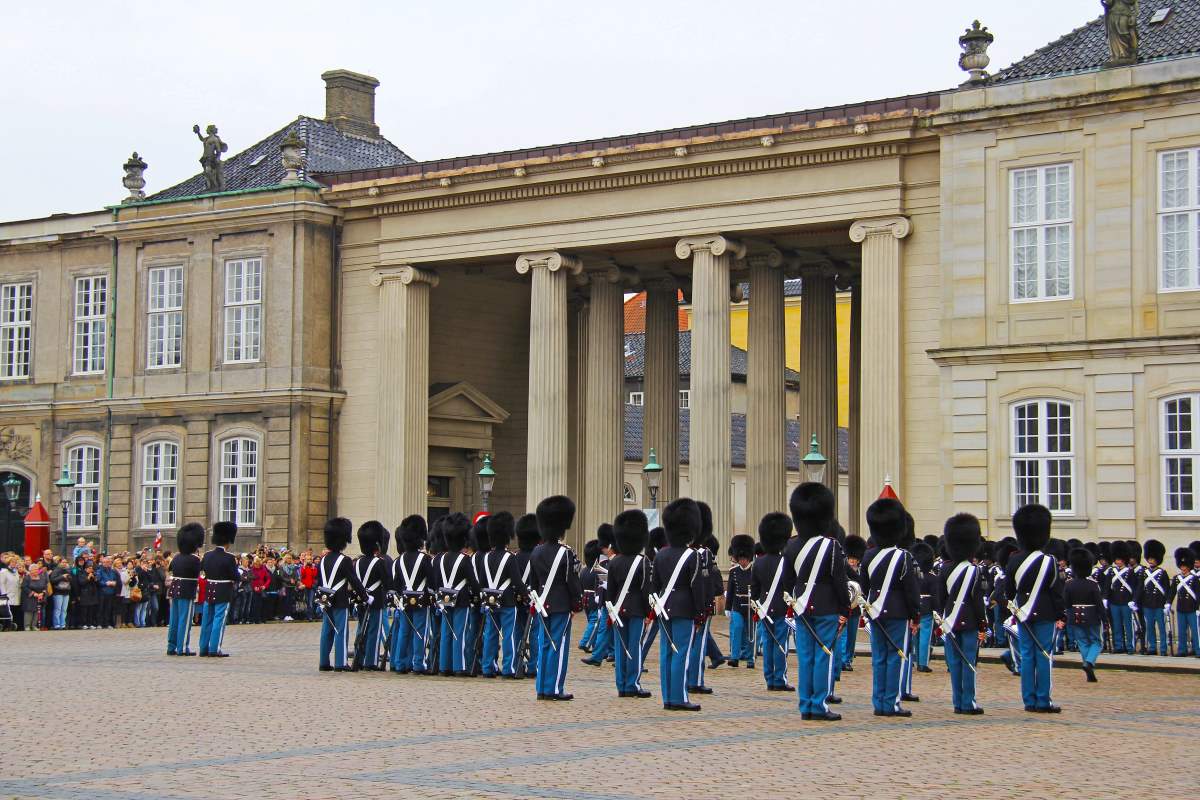
6. Den Blå Planet
Den Blå Planet is Northern Europe’s largest aquarium with seven million liters of water and more than 20,000 animals divided into 450 species. Here you can dive into the marvelous universe of fish and get up close and personal with the many animals that live below sea level.
Meet the ferocious pirate fish, the world’s largest freshwater fish, dangerous sharks and rays, cute seals, electric eels, crocodiles, snakes, and many other animals. Walk through the 16-meter-long tunnel that leads through an aquarium with fish swimming right in front of your nose. The possibilities are endless, and it is one of the best things to do in Copenhagen for families with children.
The entrance fee to Den Blå Planet is DKK 170 for adults and DKK 95 for children from 3-11 years. There’s free admission for children under 3 years. Read more on Den Blå Planet’s official website.
7. Strøget
Strøget is Copenhagen’s main pedestrian street, stretching over 1.1 kilometers from the City Hall Square to Kongens Nytorv. Strøget is one of the longest pedestrian streets in Europe and is the obvious place to visit if you’re looking for shopping in Copenhagen.
The exclusive designer shops such as Gucci, Prada, Louis Vuitton, and Hermes are located at the end towards Kongens Nytorv. But don’t worry, there are also more budget-friendly stores. If you’re walking on Strøget towards the City Hall Square, you’ll pass shops such as H&M, Zara, and Vero Moda.
Of course, Strøget also offers other than shops. You can also find a myriad of restaurants, cafes, museums, and historical sites. It’s also not uncommon to see a street artist or two doing crazy tricks or playing various instruments. Strøget is definitely one of the best things to do in Copenhagen if you love shopping.
8. City Hall Square (Rådhuspladsen)
The City Hall Square is one of the central squares in Copenhagen and is connected to Kongens Nytorv by Strøget. It is one of the busiest places in the capital and is passed by thousands of people daily. The many houses around the square together contain Denmark’s largest collection of neon advertisements. There are also demonstrations, concerts, and exhibitions on the Town Hall Square at regular intervals.
The City Hall is of course to be found on the City Hall Square. This is a beautiful and important building that you shouldn’t miss. With a height of about 105 meters, the City Hall is one of the tallest buildings in Copenhagen. It’s possible to get up at the top of the City Hall Tower from where there’s a great view. However, be aware that you must climb about 300 steps to reach the top of the tower.
If you want to visit the City Hall tower, there are usually guided tours from Monday to Friday at 11:00 and 14:00 and Saturdays at 12.00 The entrance to the tower is DKK 40 per person and the trip lasts about 30 minutes.
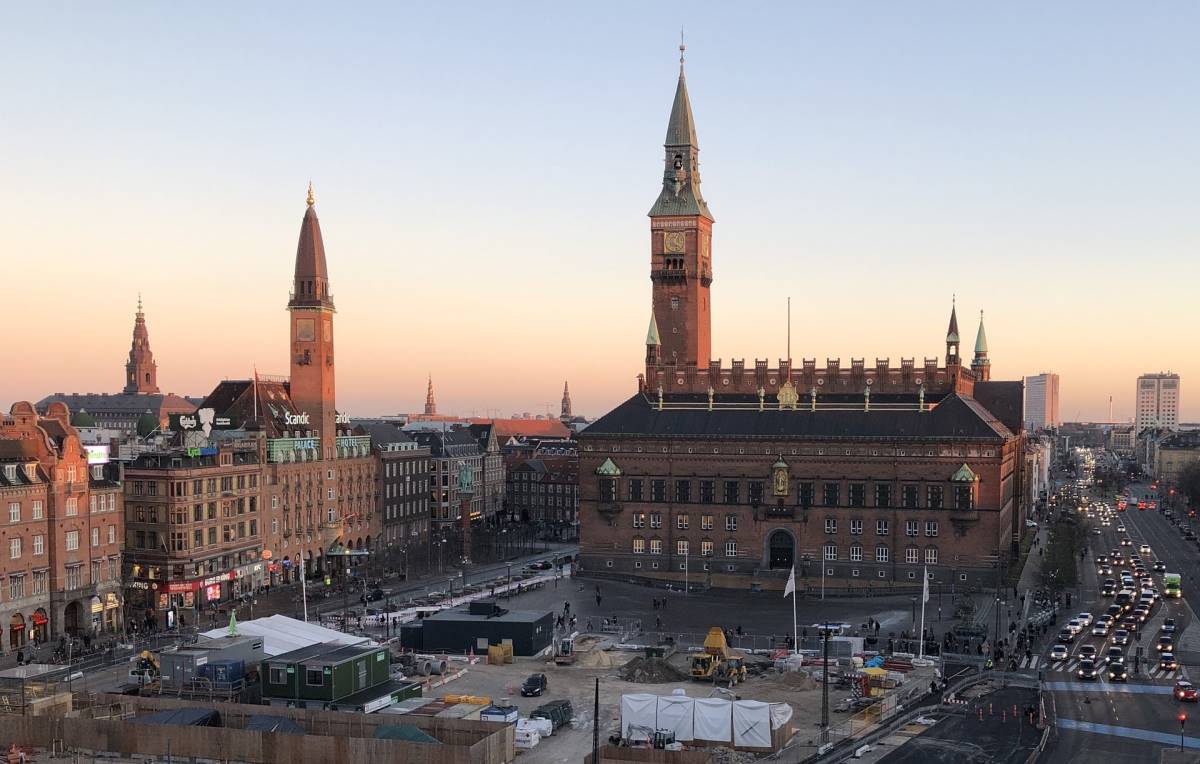
9. King’s Garden (Kongens Have)
The King’s Garden is the most popular park in Copenhagen and one of the best free things to do in Copenhagen as well. It was built by Christian IV in the early 18th century in connection with the construction of Rosenborg Castle. The King’s Garden is thus the oldest royal garden in Denmark. The garden has been remodeled several times over the years, but many of the original main paths have been preserved.
The popular garden in Copenhagen offers many beautiful sculptures and a myriad of beautiful plants and flowers. In the middle of the King’s Garden is the enchanting Rosenborg Castle which is definitely worth a visit. If you want to experience the classic Copenhagen atmosphere in the King’s Garden, then you must sit in the grass and enjoy life in the beautiful surroundings.
There’s free admission to the King’s Garden, but it isn’t free to visit Rosenborg Castle.
10. The Royal Danish Opera House (Operaen)
The Royal Danish Opera House is Denmark’s national opera and was inaugurated by the Queen on 15 January 2005. If you stand by the equestrian statue of Frederik V on Amalienborg Palace’s square, you’ll be able to look directly at the Opera on the other side of the harbor.
Opera, ballet, and concerts are performed in the distinguished halls. However, you should be aware that it isn’t exactly a cheap pleasure to attend. Read more on the Royal Danish Opera’s official website.
11. Ny Carlsberg Glyptotek
Ny Carlsberg Glyptotek is a large and popular art museum in Copenhagen, founded by Carlsberg founder’s son Carl Jacobsen in the late 1800s. The Glyptotek’s permanent collection consists of about 10,000 works divided into two main collections – the antique collection and the modern collection.
Many of the works of art at the museum originate from ancient Egypt, Greece, Italy, and the Middle East. There’s also a French section with works by great French artists such as Monet and Van Gogh. One of the museum’s major attractions is the Winter Garden. Here you’ll be able to walk around in subtropical surroundings in the cold winter weather.
The entrance to Ny Carlsberg Glyptotek is DKK 115 for adults and DKK 85 for young people under the age of 27 years. There’s free admission for children from 0-17 years. However, you should be aware that you can visit the museum for free on Tuesdays. Read more on Glyptoteket’s official website.
12. Magstræde and Snaregade
Magstræde and Snaregade are two of the oldest and most beautiful streets in Copenhagen with the city’s oldest townhouses. Several of the houses survived and avoided the major fires that ravaged the streetscape in the 18th century. Their survival has meant that most of the houses are beautifully preserved today.
Both streets are full of charm with their narrow-cobbled streets and historic buildings. As you walk around the streets, your thoughts immediately turn to a distant and bygone era. It’s easy to imagine how the horse-drawn carriages bumbled down the bumpy streets on the way to the harbor in the old days. The most beautiful of the two streets is probably Magstræde which is characterized by colorful houses.
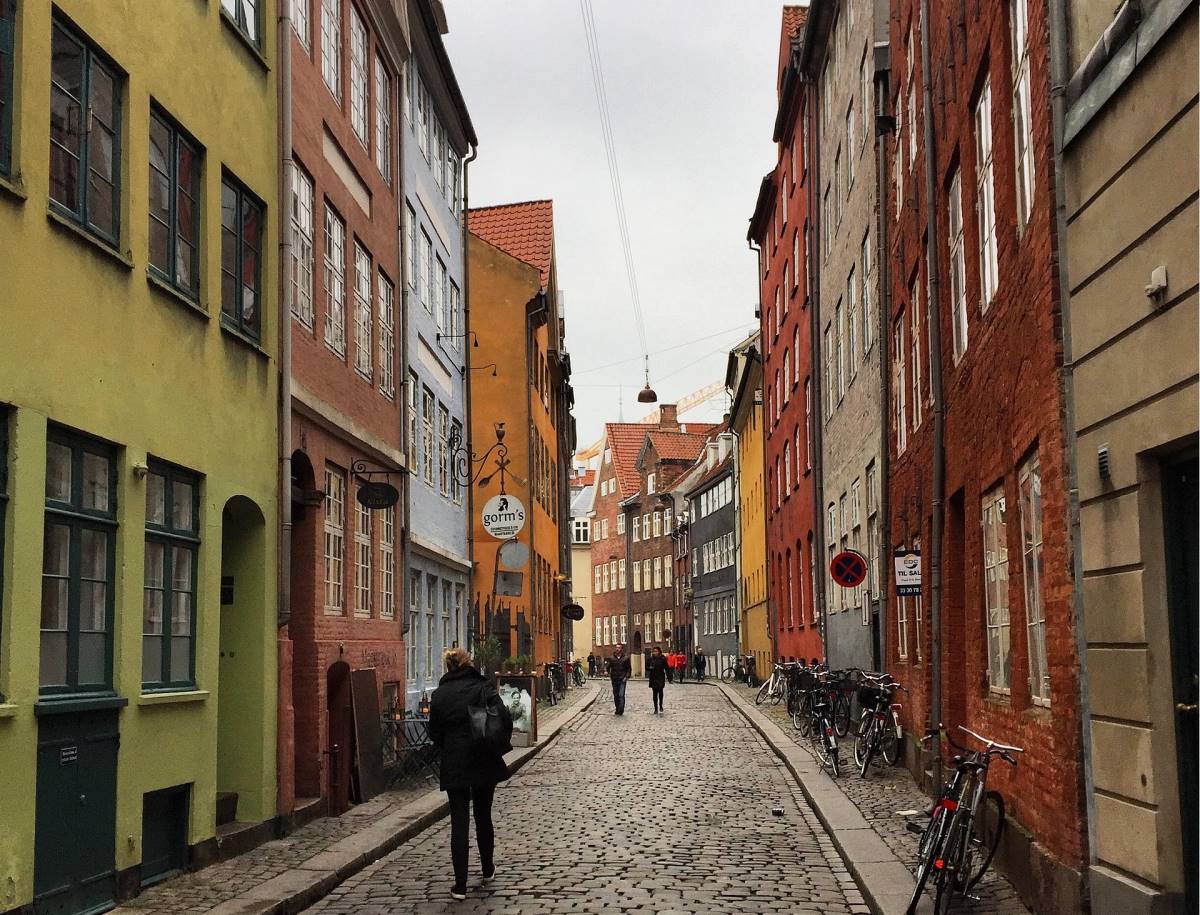
13. Copenhagen Zoo
Copenhagen Zoo is one of Europe’s oldest zoos and is home to more than 4,000 animals spread over hundreds of different species. It’s a large zoo, so remember to set aside plenty of time for your visit. Inside the Zoo, you can get up close and personal with popular animals such as polar bears, penguins, pandas, lions, giraffes, kangaroos, monkeys, elephants, and many other fascinating animals.
Animals are almost always a great success with children and therefore there’s no doubt that it’s one of the best attractions in Copenhagen for families with children. In addition to the usual animals in the Zoo, you can also visit the children’s zoo with goats, cows and much more. Copenhagen Zoo also offers several great playgrounds and excellent restaurants.
Admission to Copenhagen Zoo is DKK 195 for adults and DKK 105 for children from 3-11 years. There’s free admission for children under 3 years. Read more on Copenhagen Zoo’s official website.
14. Church of Our Saviour (Vor Frelsers Kirke)
The Church of Our Savior is best known for its corkscrew-shaped church tower. From here there’s one of the best panoramic views of Copenhagen from a height of 90 meters.
To get to the viewpoint, it requires you to climb the 400 narrow steps to the top. It can be a tough trip, but you’ll be rewarded with one of the most beautiful views of Copenhagen. The last 150 steps run on the outside of the tower, so it isn’t a sight in Copenhagen for people with a fear of heights.
It’s free to visit Our Savior’s Church, but it costs DKK 35 to visit the church tower in low season and DKK 50 in high season. You should be aware that the tower is closed every year from 16 December to 22 February. If the weather is bad, it may be closed for safety reasons. Read more on Our Saviour’s official website.
15. The Little Mermaid (Den Lille Havfrue)
Attracting thousands of visitors every year, The Little Mermaid is one of the biggest landmarks in Copenhagen. She sits beautifully placed on her rock and looks hopefully out to sea.
The sculpture is inspired by H.C. Andersen’s fairy tale about The Little Mermaid and was a gift to Copenhagen from the brewer Carl Jacobsen. He had reportedly been to the Royal Theater to see the ballet with The Little Mermaid and was so moved that he asked the sculptor Edvard Eriksen to create a statue.
The Little Mermaid was set up by the quay in 1913 and has been sitting there ever since. However, she was on a short trip to China for the World Expo in 2010. What an adventurer she is!
The Little Mermaid is made of bronze and granite but has still managed to lose her head several times and her arm once. She has also had paint poured over her on several occasions during various episodes of vandalism. The aging lady has been exposed to a bit of everything but has thankfully been rescued each time. She’s definitely one of the greatest must-see sights in Copenhagen.
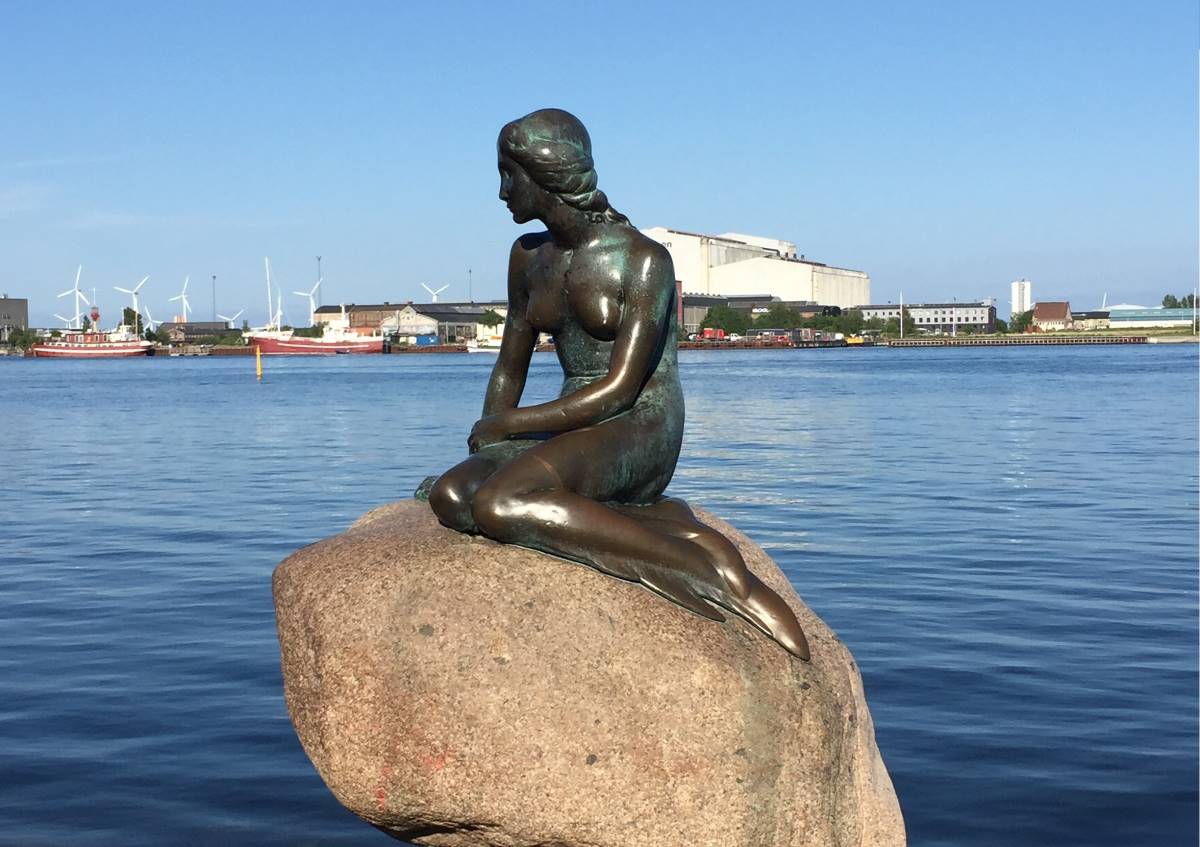
16. Rosenborg Castle (Rosenborg Slot)
Rosenborg Castle was originally built as a gazebo by order of Christian IV in 1606. The castle has since been under many extensive renovations and expansion. In 1633 it was completed as the castle we know today. Rosenborg Castle was used as a royal residence until about 1710 when Frederik IV abandoned it in favor of other more contemporary summer residences.
Today, Rosenborg Castle is home to an art history museum with some of Denmark’s greatest cultural treasures. In the underground treasure chests, you can get a glimpse of the Danish crown jewels and royal crowns, consisting of four jewelry sets.
Another important attraction at Rosenborg Castle is the knights’ hall with thrones, guarded by three lions of silver in lifelike size. The rooms of the castle are well preserved and provide a great insight into the life of the royals.
Admission to Rosenborg Castle is DKK 115 for adults and DKK 75 for students. There is free admission for children from 0-17 years. Read more about Rosenborg Castle.
17. Torvehallerne
Torvehallerne is a delicious food market in Copenhagen with about 60 stalls, most of which sell food of the highest quality. Most big cities have ancient markets with a long history, but Torvehallerne didn’t open until 2011.
Although it’s a relatively new market, its popularity is unmistakable. It is visited by more than 115,000 people every single week and is one of the coolest and most popular things to do in Copenhagen.
A visit to Torvehallerne in Copenhagen offers exquisite taste experiences and delicious scents that stimulate all the senses. You can find everything from freshly brewed coffee, fragrant tea, strong whiskeys, and exotic spices to freshly baked bread, fresh fish, tasty herbs, and cheeses. You can find all sorts of delicacies to take home or enjoy at one of the small eateries in Torvehallerne.
18. National Museum of Denmark (Nationalmuseet)
The National Museum of Denmark is located in the Prince’s Palace and includes objects from all of Denmark’s history, but also foreign history. The museum’s collections go back to the ice age reindeer hunters, antiquity, the Viking Age, the Middle Ages, the introduction of Christianity, and much more.
The permanent exhibitions at the museum include the world’s largest collection of golden altars, treasures from Viking expeditions, weapons and jewelry from the Iron Age, well-preserved bogs, and Denmark’s oldest coin. You can also experience seeing the world’s largest collection of objects from Greenland, the world’s oldest paintings, Egyptian mummies, Greek marble sculptures, and much more.
Admission to the National Museum is DKK 95 for adults and free for children under 18 years. Read more on the National Museum’s official website.
19. Christiania
The free town of Christiania is one of Denmark’s most popular tourist attractions. It’s a green area that is home to about 750 people. In 1971, a group of slum stormers moved into the disused Bådsmandstræde Barracks and settled illegally in the old buildings. They dreamed of a life based on freedom, creativity, and community.
Since settling in the area, they’ve had many controversies with the police, and this has led to several violent incidents. Even though the police and the old residents are trying to fight crime in the free town, there’s still an obvious and extensive cannabis sale on Pusher Street.
Today Christiania is still a paradise for people with an alternative lifestyle. It’s a fun thing to do in Copenhagen to walk around the car-free streets that aren’t reminiscent of anywhere else in Denmark.
The residents themselves have adopted some safety rules where they dissuade guests from photographing, running, and talking on the phone in Christiania. These rules must be especially observed around Pusher Street.
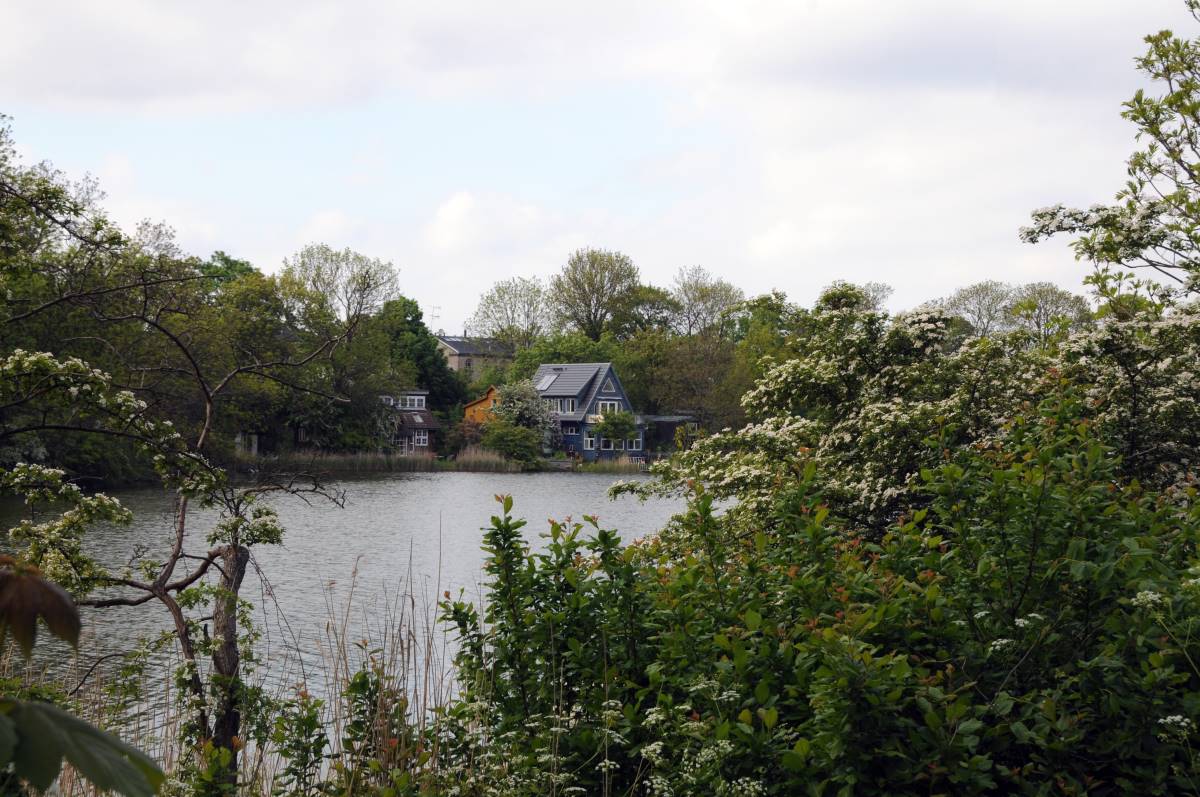
20. Marble Church (Marmorkirken)
The marble church is officially called Frederik’s church and is one of the most impressive churches in Copenhagen. It’s beautifully located in a straight line with Amalienborg Palace and the Opera in the elegant district of Frederiksstaden.
The impressive church with its iconic copper-green dome and beautiful marble facade is definitely worth a visit. Give yourself plenty of time to admire the beautiful exterior and interior of the Marble Church. Don’t forget to join a guided tour up the dome, from where there’s an amazing view of Copenhagen and the Øresund.
There’s free admission to the Marble Church, but it costs DKK 35 for adults and DKK 20 for children under 18 to visit the dome. Outside the summer period, the tours take place every Saturday and Sunday at 13.00. In the period from 15 June to 31 August and during the autumn holidays, there are trips to the tower every day at 13.00. Read more on the Marble Church’s official website.
21. Amager Strandpark
Amager Strandpark is Copenhagen’s largest beach and is located only 5 kilometers from the city center. Although the beach is visited by about 1 million people every year, it’s never overrun.
Amager Strandpark spreads over a huge area with 4.6 kilometers of sandy beach as well as the large green areas Femøren and Tiøren and a large lagoon. The artificial lagoon extends over 2 kilometers and is perfect for children with its shallow and warm water without waves.
Amager Strandpark offers many great outdoor facilities that are used effectively by runners, swimmers, divers, kayakers, skaters, and many more. In addition, there are many activity tools for free use such as basketball hoops, soccer goals, beach volleyball court, diving court, springboard, parkour training courts, and a training pavilion. There’s also a fine selection of beach shops as well as shops renting equipment for water sports activities.
22. Christiansborg Palace (Christiansborg Slot)
Christiansborg Palace is the place where the Government, the Supreme Court, and the Prime Minister of Denmark are located. But this is also where you’ll find the Royal Representation Rooms with the Knights’ Hall and the Queen’s tapestries, the Royal Stables, the Royal Party Kitchen, Christiansborg Palace Church, and Absalon’s Ruins. Therefore, Christiansborg Palace is clearly one of the most iconic things to do in Copenhagen.
Christiansborg Palace has been the center of power in Denmark for 800 years, but the current castle was not inaugurated until 1928. At this spot, castles have been built on top of castles while several Danish kings have lived here through time.
You can either explore the castle on your own or take part in a guided tour. The prices of the experiences are very different. You can get a better insight on Christiansborg Palace’s official website. You can also visit the 106 meters high tower at Christiansborg Castle, the tallest tower in Copenhagen. From here there’s a unique view of the capital, and it’s even for free.
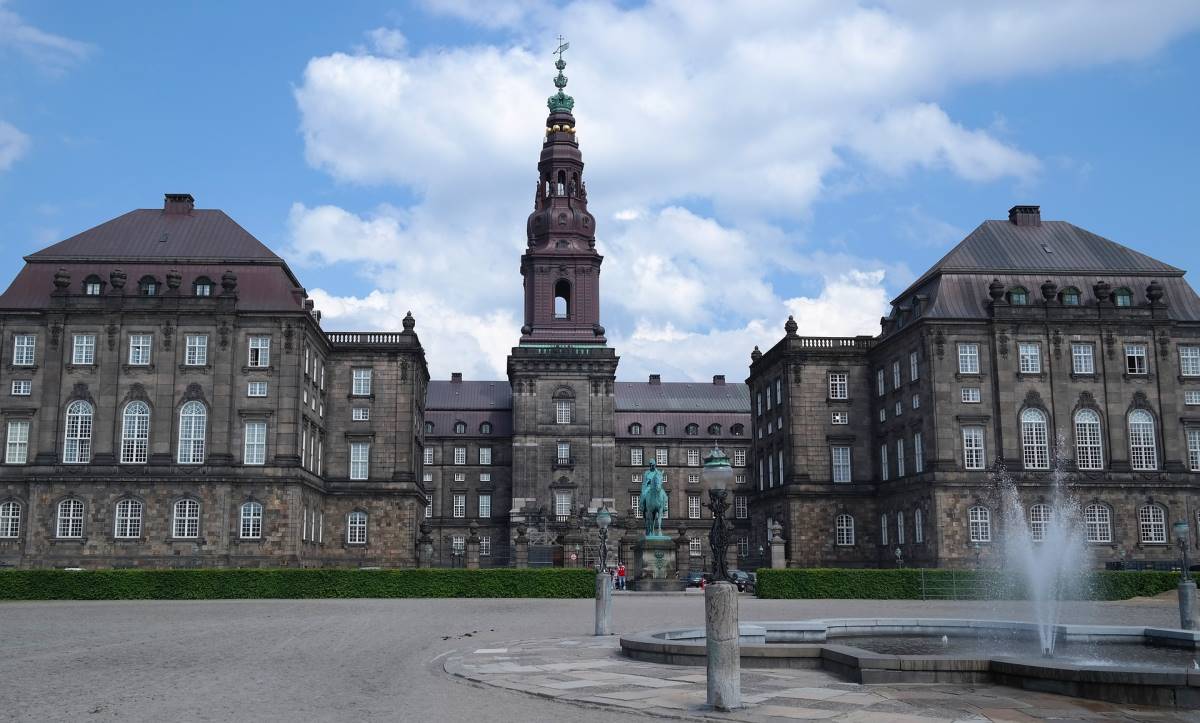
23. Canal tour (Kanalrundfart)
One of the best and most popular things to do in Copenhagen is to go on a canal tour. It provides a unique opportunity to experience Copenhagen from the waterside. Along the way, you’ll pass many of the capital’s greatest sights.
A classic canal cruise usually lasts 1 hour and sails past The Little Mermaid, Langelinie, Amalienborg Palace, the Opera House, Nyhavn, and much more. The guide on the tour is usually good at talking about the many sights along the way. Most tours are in Danish and English, but there are also tours in German, Spanish, French, Italian, etc.
There are many different providers of canal cruises in Copenhagen and the prices are very different. However, these are usually reasonable prices, and you should expect to get rid of at least DKK 50 per. person.
24. Frederiksberg Gardens (Frederiksberg Have)
Frederiksberg Gardens is a beautiful open space in the middle of the capital. It has been used extensively by Copenhageners since 1749. The romantic landscape gardens are extremely well-kept and invite to pleasant nature experiences in Copenhagen. The garden is full of winding paths, cozy nooks, large grass areas, idyllic lakes, and canals with rental of rowing boats.
The gardens also offer a few surprises such as a Chinese gazebo, a cascading waterfall, a cave, and a temple that previously served as an entrance to Copenhagen Zoo. You can also choose to relax on the lawn and enjoy the view of Frederiksberg Castle, built in Italian Baroque style dating back to 1703.
Frederiksberg Garden is a free thing to do in Copenhagen. Read more about Frederiksberg Garden.
25. Kastellet
Kastellet was built as part of Copenhagen’s ramparts in 1624 and is one of the best-preserved fortresses in Northern Europe. Kastellet hasn’t only been used as a fortress but has also served as a prison with prisoners who were notorious for being the kingdom’s worst enemies.
Today, Kastellet functions as a modern workplace for several hundred people in the Danish defense and military. Kastellet manages to have several purposes and also functions as a popular tourist attraction in Copenhagen with a museum surrounded by beautiful nature. It’s also popular to walk or jog on the ramparts around the fortress.
The castle is open to visitors all year round and has free admission. However, for good reasons, it isn’t possible to visit the danish defense and military.
26. Gefion Fountain (Gefionspringvandet)
The Gefion Fountain is Copenhagen’s largest monument and was created by the sculptor Anders Bundgaard in 1908. The Carlsberg Foundation and the Copenhagen Municipality’s Art Foundation Bundgaard paid for the work on Carlsberg’s 50th anniversary.
The fountain illustrates the old Nordic legend about how Zealand originated. Zealand is called Sjælland in Danish and is the region where Copenhagen is located. The story goes that the Swedish King Gylfe promised the goddess Gefion all the Swedish land that she could manage to plow in a day and a night.
Therefore, Gefion turned her four sons into oxen that pulled her plow and plowed so much land out of Sweden that it became Zealand. The large hole left in Sweden became the lake Väneren.
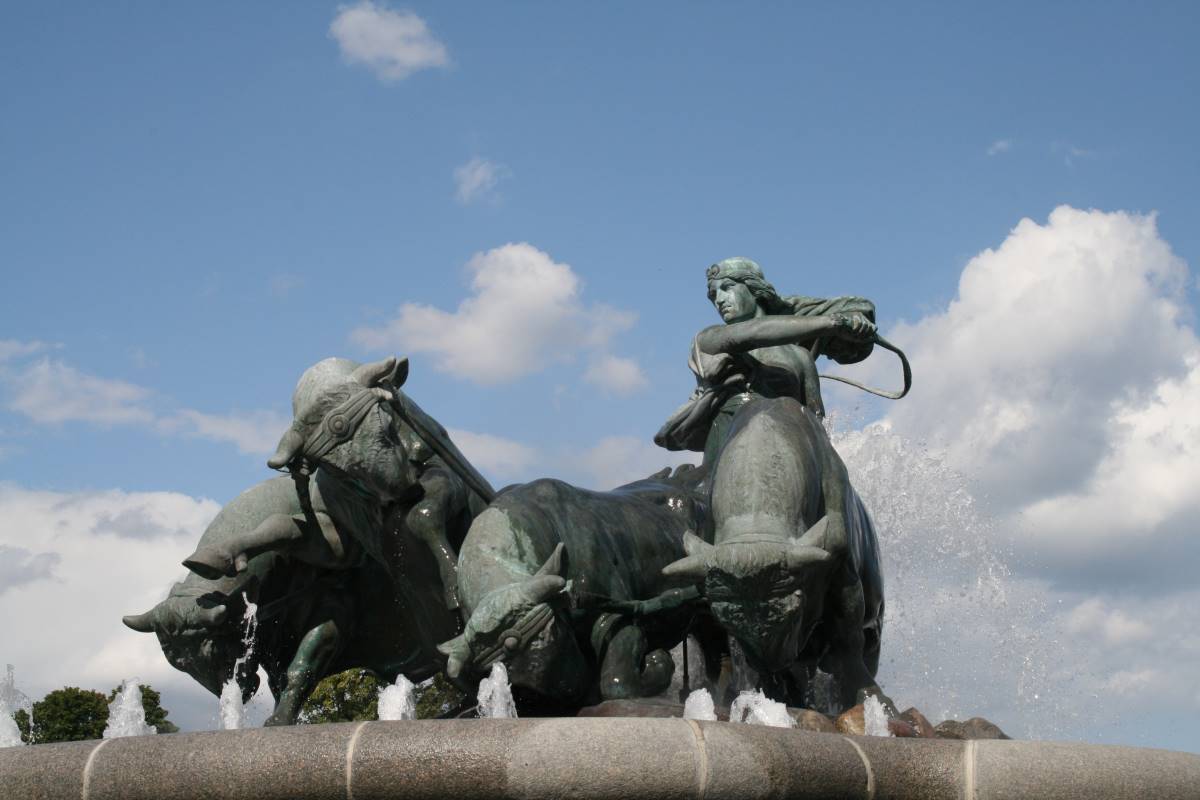
27. King’s New Square (Kongens Nytorv)
King’s New Square is located at the end of Strøget, and on the opposite side is the old harbor district Nyhavn. King’s New Square is known for being Copenhagen’s largest and most distinguished square. It’s surrounded by beautiful and historic buildings.
The most striking buildings around the square include the Royal Theater, the Hotel D’Angleterre, the French Embassy, the Art Hall Charlottenborg, and the Magasin du Nord. In the middle of Kings New Square stands the Equestrian Statue, which the newly hatched students dance around once they’ve got their student hats.
28. Bakken
Dyrehavsbakken is located a little north of Copenhagen and is known for being the world’s oldest amusement park. Here you’ll find 32 fun rides for both children and adults. You shouldn’t expect to find a myriad of wild and fast rides, but rather many cozy ones.
Bakken is one of the absolute best things to do in Copenhagen and is definitely worth a visit! In addition to rides, Bakken also offers lots of games and activities, restaurants, ice cream parlors, and other entertainment.
If you’re lucky, you might meet Denmark’s clown figure, Pierrot. You may also visit Bakken on a day when there’s a free concert with great Danish artists. It’s also on Bakken you’ll find the danish Circus Revue dating back to 1935.
It’s free to visit Bakken, but you must pay for a touring band or individual tickets for the rides. Note that Bakken is only open every day during the summer period. However, as something new, they’ve started to open on selected days during the autumn holidays and for Christmas. Read more on Bakken’s official website.
29. Round Tower (Rundetårn)
The round tower was built by Christian IV and was completed in 1642. It boasts the title of Europe’s oldest functioning observatory and for being one of the most popular things to do in Copenhagen. The round tower is 41.55 meters high, and it’s possible to reach the viewing platform at a height of 34.8 meters. From here there’s an excellent view of large parts of Copenhagen.
Inside the tower, a long snail’s path winds almost all the way up to the viewing platform. The last piece must be done on a spiral staircase. The whitewashed aisle is 268.50 meters long in the outer lane and only 85.50 meters long in the inner lane at the core of the tower. If you’re brave, you can look down into the core of the Round Tower by standing on a glass floor that floats 25 meters above the ground.
The entrance to the Round Tower is DKK 25 for adults and DKK 5 for children from 5-15 years. There’s free admission for children under the age of 5. Read more on the Round Tower’s official website.
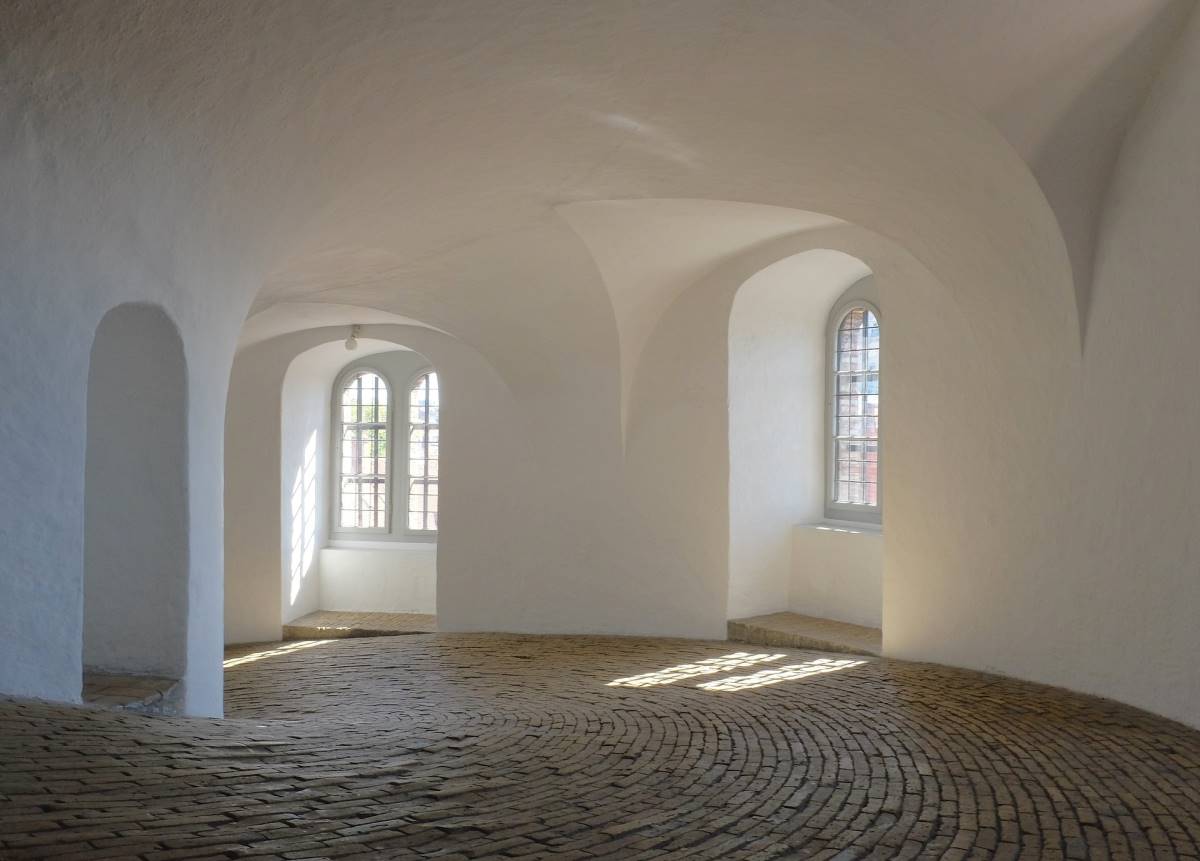
That’s all on this list of the best and most popular things to do in Copenhagen. What are your favorite things to do in Copenhagen? What are you looking forward to on your trip to Copenhagen, Denmark? Feel free to leave a comment.
Planning a trip to Denmark? You might also like these articles:
- 20 Amazing Free Things to Do in Copenhagen
- 17+ Very Best Things to Do in Denmark
- 7 UNESCO Attractions in Denmark
- 18 Best Things to Do in Ebeltoft, Denmark
… Or read all articles from Denmark.
Like this article? Pin it for later!
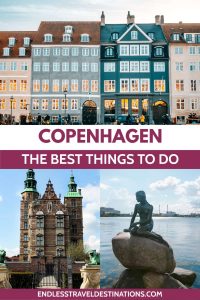
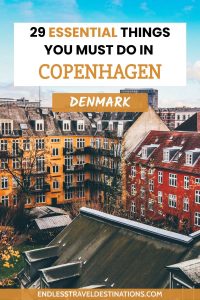
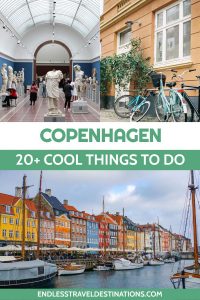
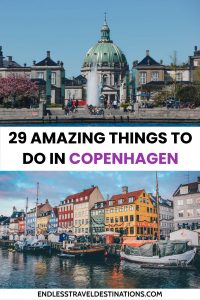
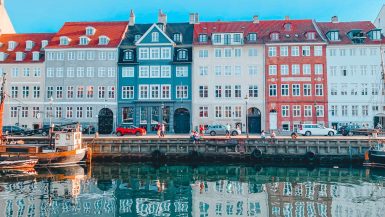
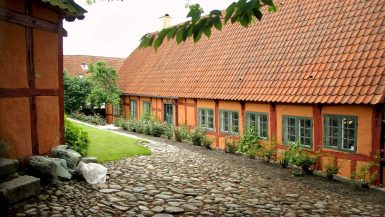
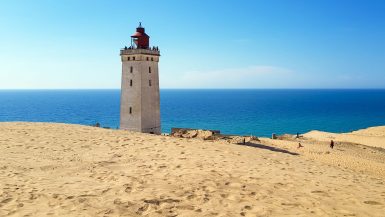
The coziest city! Love this post !